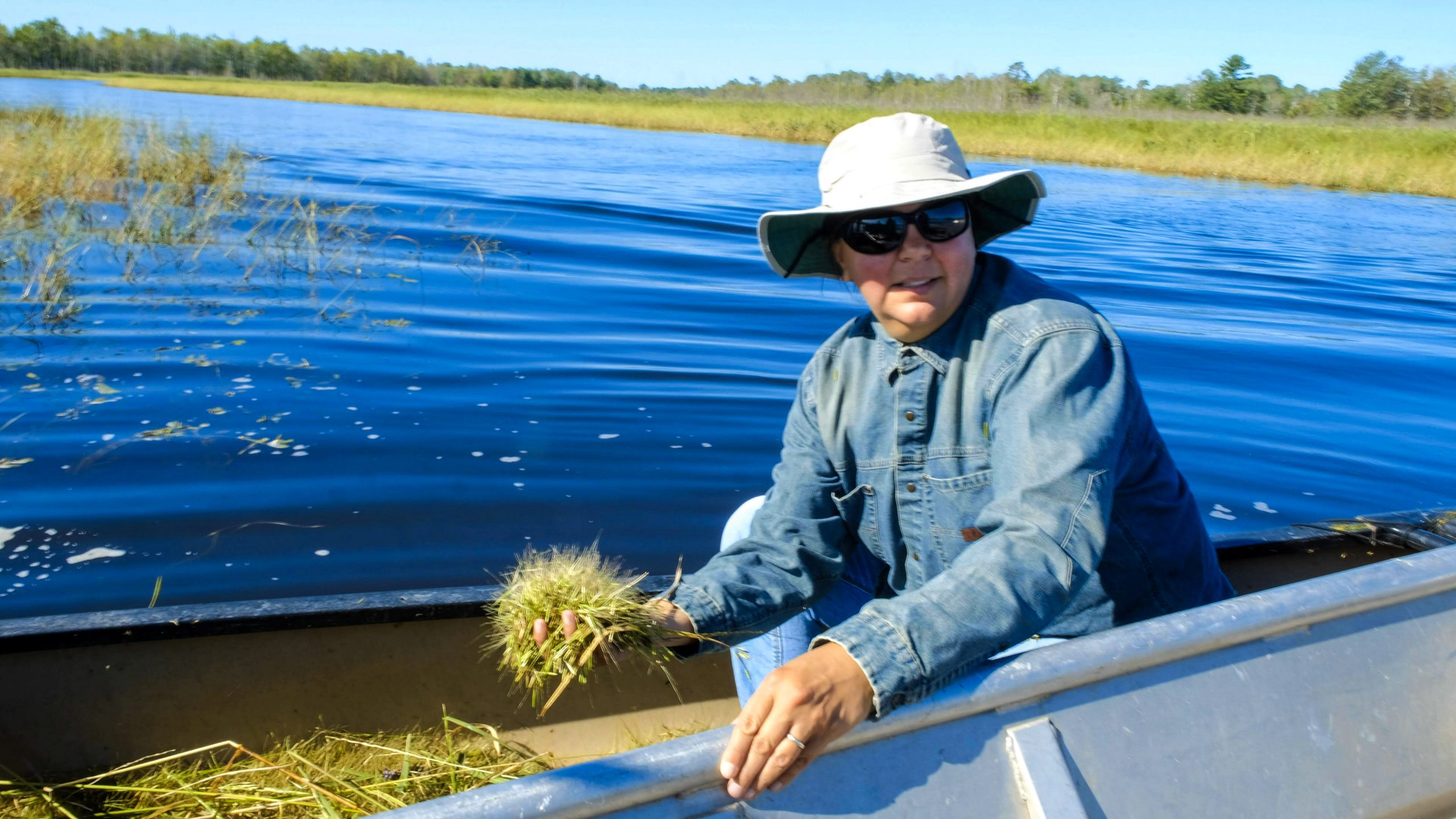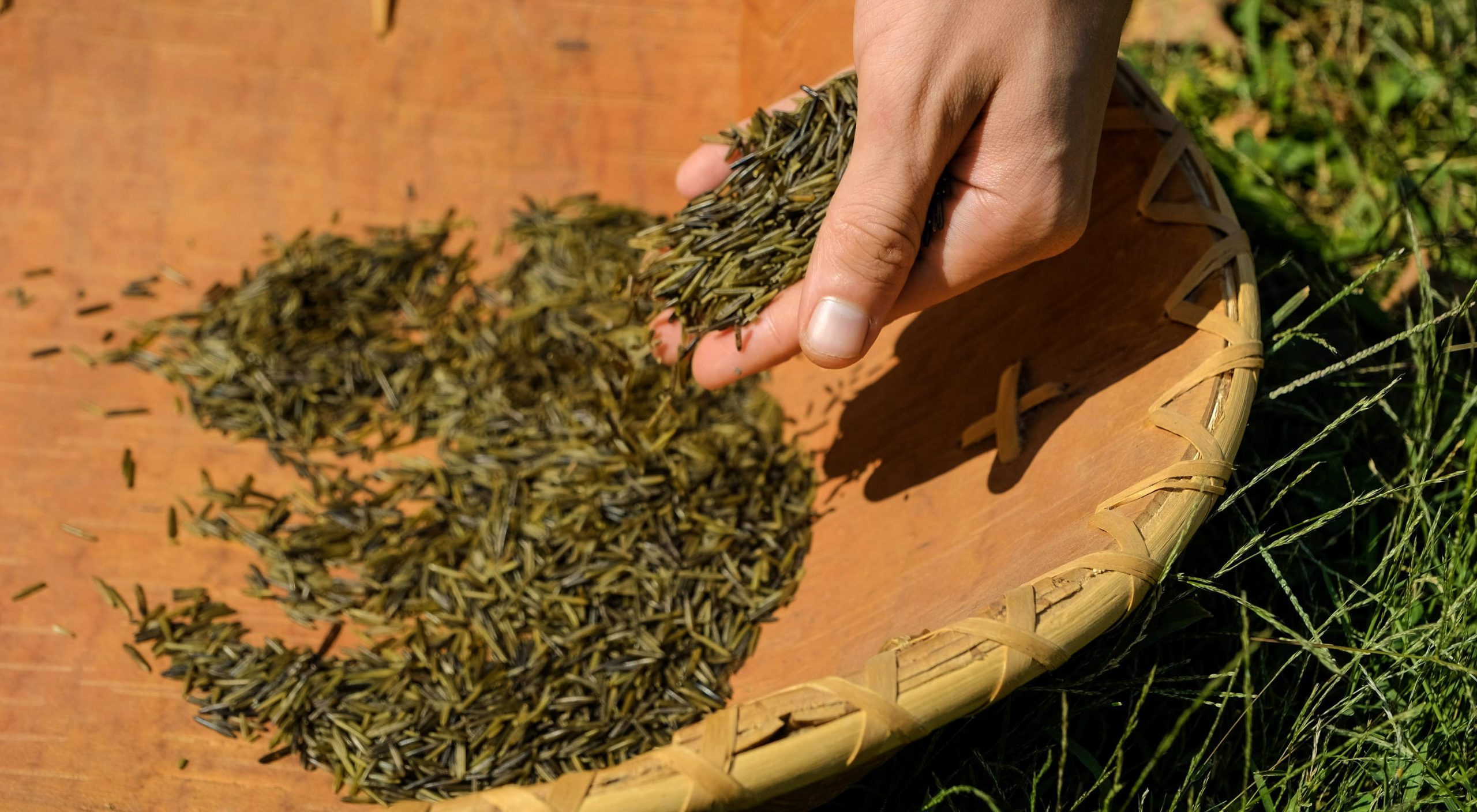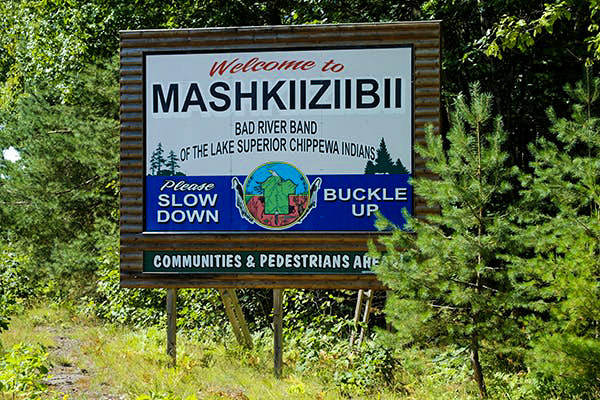Indianz.Com > News > Indian Country Today: Ojibwe people carry on wild rice tradition amid COVID-19
‘Manoomin will carry you through’
The healing power of the annual wild rice harvest transcends the pandemic
Wednesday, September 30, 2020
Indian Country Today
Every fall, Ojibwe go down to the river and lake sloughs surrounding the Great Lakes region to manoominike, or make wild rice, in two-person teams in canoes.
One person stands in the rear of the canoe, propelling it forward through the rice beds with a long pole, while the other person sits in the front, bending the rice stalks with two wooden sticks and knocking the grains into the bottom of the canoe. Some of the grains fall back into the water during the process, thus allowing the manoomin, or wild rice, to reseed itself.
The annual manoomin harvest goes from late August until mid to late September as it has for time immemorial. This year is no different, even with the coronavirus altering nearly every aspect of human life.
Since harvesting manoomin is by nature a safe, social-distanced activity, it is providing a much-needed sense of normalcy during the COVID-19 pandemic.
“Manoominike is the perfect antidote for us now, especially after being worried and cooped up inside for so long,” says Philomena Kebec of the Bad River Band of Lake Superior Chippewa in Wisconsin.



2020 Bad River Powwow has been cancelled.
Posted by Bad River Band of Lake Superior Chippewa on Thursday, June 4, 2020
Mary Annette Pember, citizen of the Red Cliff Ojibwe tribe, is national correspondent for Indian Country Today. Follow Pember on Twitter @mapember. Based in Cincinnati, Ohio. Pember loves film, books and jingle dress dancing.
“Our stories are worth telling. Our stories are worth sharing. Our stories are worth your support”: This article originally appeared on Indian Country Today LLC, a nonprofit, public media enterprise. Reader support is critical. ICT does not charge for subscriptions and tribal media (or any media, for that matter) can use the publiciation’s content for free. Contribute to the nonprofit Indian Country Today.
Search
Filed Under
Tags
More Headlines
‘Blindsided’: Indian Country takes another hit in government efficiency push
Native America Calling: A new wave of resistance against Trans Native relatives
Urban Indian health leaders attend President Trump’s first address to Congress
‘Mr. Secretary, Why are you silent?’: Interior Department cuts impact Indian Country
Cronkite News: Two Spirit Powwow brings community together for celebration
Native America Calling: Native shows and Native content to watch
VIDEO: Oversight Hearing to Examine Native Communities’ Priorities for the 119th Congress
AUDIO: Oversight Hearing to Examine Native Communities’ Priorities for the 119th Congress
AUDIO: Leaving Indian Children Behind: Reviewing the State of BIE Schools
Cronkite News: Native student program shuts down due to President Trump
NAFOA: 5 Things You Need to Know this Week (March 3, 2025)
Filmmaker Julian Brave NoiseCat makes history at Academy Award ceremony
Senate Committee on Indian Affairs schedules business meeting to consider bills
Chuck Hoskin: Cherokee Nation advocates for Indian Country
Native America Calling: Native education advocates assess the new political landscape
More Headlines
Native America Calling: A new wave of resistance against Trans Native relatives
Urban Indian health leaders attend President Trump’s first address to Congress
‘Mr. Secretary, Why are you silent?’: Interior Department cuts impact Indian Country
Cronkite News: Two Spirit Powwow brings community together for celebration
Native America Calling: Native shows and Native content to watch
VIDEO: Oversight Hearing to Examine Native Communities’ Priorities for the 119th Congress
AUDIO: Oversight Hearing to Examine Native Communities’ Priorities for the 119th Congress
AUDIO: Leaving Indian Children Behind: Reviewing the State of BIE Schools
Cronkite News: Native student program shuts down due to President Trump
NAFOA: 5 Things You Need to Know this Week (March 3, 2025)
Filmmaker Julian Brave NoiseCat makes history at Academy Award ceremony
Senate Committee on Indian Affairs schedules business meeting to consider bills
Chuck Hoskin: Cherokee Nation advocates for Indian Country
Native America Calling: Native education advocates assess the new political landscape
More Headlines